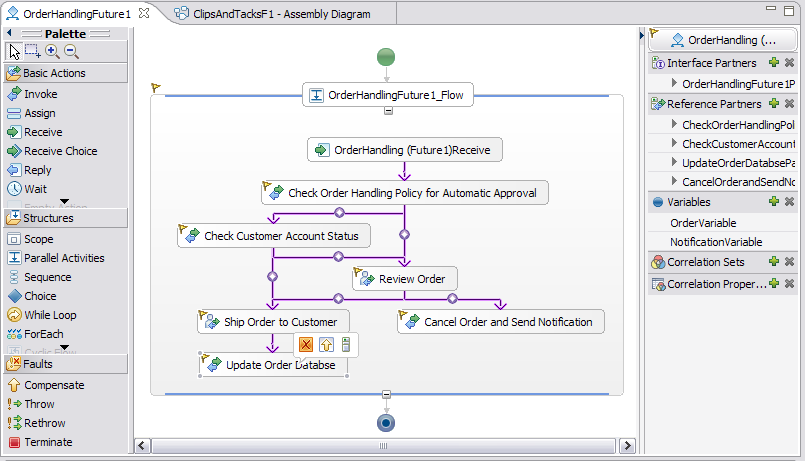Before you create the monitor model, you must select the events that WebSphere® Process Server will generate. WebSphere Business Monitor will use the generated events to monitor the process. Events need to emitted for decisions and invocation actions in the process. The process representation in WebSphere Integration Developer is BPEL. WebSphere Business Modeler decisions become BPEL links in WebSphere Integration Developer. You need to configure to emit events for the parallel activity BPEL element (OrderHandlingFuture1_Flow) to emit events for the links.
The business object date (order form data) can be accessed from several events including SCA ENTRY events, receive activity (EXIT) events, or invoke activity (ENTRY) events. You could use the SCA events, but then the auto-generated monitor model would not have a trigger to terminate monitoring that process instance; thus, this option requires you to add the termination trigger. You could also use the receive activity EXIT event. In this tutorial you will use the first invoke activity (ENTRY) in the process to access the order form data.
The following screen capture shows the yellow flag icons that indicate the events that are selected to be emitted for the components. There are flags on each of the six activities. The flag in the upper left is for the flow. The flag in the upper right is for the process. There are eight flags in total.

